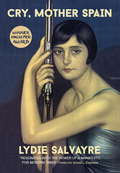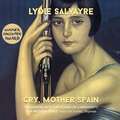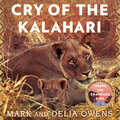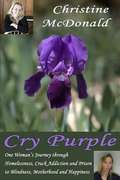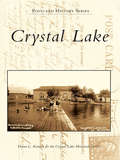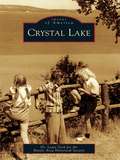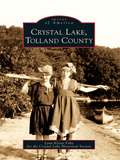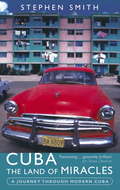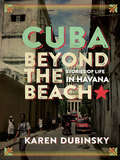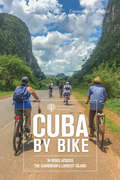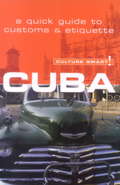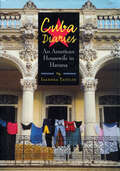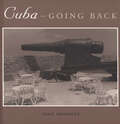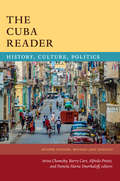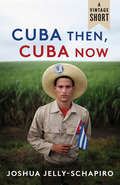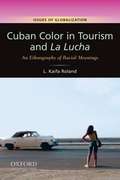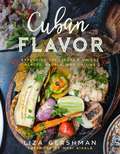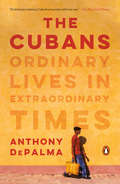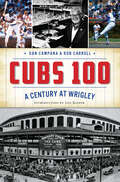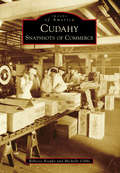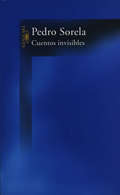- Table View
- List View
Cry, Mother Spain
by Lydie SalvayreAged fifteen, as Franco's forces begin their murderous purges and cities across Spain rise up against the old order, Montse has never heard the word fascista before. In any case, the villagers say facha (the ch is a real Spanish ch, by the way, with a real spit).Montse lives in a small village, high in the hills, where few people can read or write and fewer still ever leave. If everything goes according to her mother's plan, Montse will never leave either. She will become a good, humble maid for the local landowners, muchísimas gracias, with every Sunday off to dance the jota in the church square.But Montse's world is changing. Her brother José has just returned from Lérida with a red and black scarf and a new, dangerous vocabulary and his words are beginning to open up new realms to his little sister. She might not understand half of what he says, but how can anyone become a maid in the Burgos family when their head is ringing with shouts of Revolución, Comunidad and Libertad?The war, it seems, has arrived in the nick of time.
Cry, Mother Spain
by Lydie SalvayreAged fifteen, as Franco's forces begin their murderous purges and cities across Spain rise up against the old order, Montse has never heard the word fascista before. In any case, the villagers say facha (the ch is a real Spanish ch, by the way, with a real spit).Montse lives in a small village, high in the hills, where few people can read or write and fewer still ever leave. If everything goes according to her mother's plan, Montse will never leave either. She will become a good, humble maid for the local landowners, muchísimas gracias, with every Sunday off to dance the jota in the church square.But Montse's world is changing. Her brother José has just returned from Lérida with a red and black scarf and a new, dangerous vocabulary and his words are beginning to open up new realms to his little sister. She might not understand half of what he says, but how can anyone become a maid in the Burgos family when their head is ringing with shouts of Revolución, Comunidad and Libertad?The war, it seems, has arrived in the nick of time.
Cry, Mother Spain
by Lydie SalvayreIn the summer of 1936, Montse is fifteen years old and her country is on the brink of civil war. Her tiny village in the north east of Spain is a world away from the tensions beginning to overspill in other parts of the country, but when her brother José returns from working in a nearby town, brimming with anarchic zeal, Montse is captivated. Swept away by the fervour of the revolution, caught between love, family and honour, her sheltered life will be abruptly changed forever.Years later, with her memory almost gone, she is telling her daughter the story of this one dazzling summer - the only one she can remember. Her daughter meanwhile has been reading the anti-Franco pamphlet, Les Grands Cimetières sous la lune by the right-wing novelist, George Bernanos. His revulsion at the Franco regime and the complicity of the Catholic Church, intertwines with Montse's memories, as her story builds to its devastating conclusion.Powerful and deeply personal, Cry, Mother Spain unites two different experiences of one horrific conflict, making up a complex tapestry of love, faith and revolution.(P)2016 WF Howes
Cry of the Kalahari (Language Acts and Worldmaking #30)
by Delia Owens Mark Owens'A remarkable story beautifully told... Among such classics as Goodall's In the Shadow of Man and Fossey's Gorillas in the Mist' Chicago TribuneCarrying little more than a change of clothes and a pair of binoculars, two young Americans, Mark and Delia Owens, caught a plane to Africa, bought a thirdhand Land Rover, and drove deep into the Kalahari Desert. There they lived for seven years, in an unexplored area with no roads, no people, and no source of water for thousands of square miles. In this vast wilderness the Owenses began their zoology research, working along animals that had never before been exposed to humans.An international bestseller on original release, Cry of the Kalahari is the story of the Owenses's life with lions, brown hyenas, jackals, giraffes, and the many other creatures they came to know. It is also a gripping account of how they survived the dangers of living in one of the last and largest pristine areas on Earth.---------------------------------'One of the best testimonials to the perseverance, idealism and general spunk of passionate animal students' Washington Post'For anyone interested in animals or in real life adventure, this book is a must' Jane Goodall
Cry Purple
by Christine McdonaldThis is the story of the author's journey from almost two decades of prostitution, crack addiction and prison to her present life of blindness, motherhood and happiness.
Crystal Lake (Postcard History)
by Crystal Lake Historical Society Diana L. KenneySince 1835, when Ziba Beardsley declared, "The water is as clear as crystal," generations of people have enjoyed the area's spring-fed lake. The pages of this book take readers on a trip back through time to learn more about the twin towns of Nunda and Crystal Lake and their eventual union. Meet some of Crystal Lake's first settlers, as well as those who came later, and discover how they shaped the community. See photographs and descriptions of summer resorts, country clubs, parks, schools, and churches. Trace the development of both Virginia Street and the historic downtown district through vintage street scenes. Some of the buildings shown in Crystal Lake were removed long ago, yet others are still standing to serve as silent reminders of the community's rich and proud heritage.
Crystal Lake
by Dr Louis Yock Benzie Area Historical SocietyAbout nine miles long and two miles wide, Crystal Lake has been a recreational center in northwest Michigan for over 100 years. However, resorts and vacations were not the intention of Benzonia's first settlers, who arrived on Crystal Lake's eastern shore in 1858 to found a religious colony and a college. In an attempt to increase the area's economic potential with a navigable channel to Lake Michigan, Crystal Lake was accidentally lowered in 1873. As the waters drained away, an unexpected boon occurred as summer camps, cottages, and resorts sprang up along its shores. The railroads and steamships were quick to follow with eager entrepreneurs, developers, and tourists. Between Frankfort and Point Betsie to the west, and Beulah to the east, an assortment of hideaways and getaways were established to cater to people of differing religions, occupations, and classes.
Crystal Lake, Tolland County (Images of America)
by Lynn Kloter Fahy Crystal Lake Historical SocietyCrystal Lake lies between the towns of Tolland and Stafford on a five-mile-long triangular strip of land extending from the northeastern corner of Ellington. Attracted by the lake's sandy shore surrounded by forests of oak, chestnut, pine, and maple, early families of settlers called the lake Square Pond. In the 1890s, Crystal Lake became a destination resort. Its popularity extended through the advent of the interurban trolley and Depression-era auto trippers who stayed in the lake's hotels, cottages, and roadside tourist cabins. In the 1930s, the Sandy Beach Ballroom attracted the big bands of Duke Ellington, Guy Lombardo, and Cab Calloway. The ballroom also served as a roller-skating rink where young people from Ellington, Stafford, Rockville, and surrounding towns spent their leisure hours. Today Crystal Lake remains a popular getaway for fishing, swimming, and boating.
Cuba: A Journey Through Modern Cuba
by Stephen SmithFor a growing number of British holidaymakers, Cuba is a Caribbean paradise, but it is also a land of cutbacks and economic instability. Stephen Smith comes to live on the island, and his search for the real Cuba inevitably becomes a search for Fidel Castro too. Before meeting his quarry, Smith travels extensively through the 'land of miracles' in an old American automobile. His highly-personalised account features a bloody initiation into a voodoo-like cult, dining on giant rat, and checking into the Love Hotel. And he goes on manoeuvres in the Everglades with armed, but not especially competent, Cuban exiles dreaming of a second Bay of Pigs. With disarming wit and considerable insight, Stephen Smith investigates a country where communism and voodoo coexist, and where the influence of its leader of forty years continues to throw a long shadow.
Cuba: A Journey Through Modern Cuba
by Stephen SmithFor a growing number of British holidaymakers, Cuba is a Caribbean paradise, but it is also a land of cutbacks and economic instability. Stephen Smith comes to live on the island, and his search for the real Cuba inevitably becomes a search for Fidel Castro too. Before meeting his quarry, Smith travels extensively through the 'land of miracles' in an old American automobile. His highly-personalised account features a bloody initiation into a voodoo-like cult, dining on giant rat, and checking into the Love Hotel. And he goes on manoeuvres in the Everglades with armed, but not especially competent, Cuban exiles dreaming of a second Bay of Pigs. With disarming wit and considerable insight, Stephen Smith investigates a country where communism and voodoo coexist, and where the influence of its leader of forty years continues to throw a long shadow.
Cuba beyond the Beach: Stories of Life in Havana
by Karen DubinskyHavana is Cuba’s soul: a mix of Third World, First World, and Other World. After over a decade of visits as a teacher, researcher, and friend, Karen Dubinsky looks past political slogans and tourist postcards to the streets, neighbourhoods, and personalities of a complicated and contradictory city. Her affectionate, humorous vignettes illustrate how Havana’s residents—old Communist ladies, their sceptical offspring, musicians, underground vendors, entrepreneurial landlords, and poverty-stricken professors—go about their daily lives. As Cuba undergoes dramatic change, there is much to appreciate, and learn from, in the unlikely world Cubans have collectively built for themselves. A portion of the proceeds from the sale of this book will go to the Queen’s University Student Overseas Travel Fund—The Sonia Enjamio Fund, which funds Cuban/Canadian student exchange.
Cuba by Bike: 36 Bike Rides From Cienfuegos To Pinar Del Rio
by Cassandra BrooklynA cyclist’s guide to the best of Cuba Cuba is continuing to see a big upswing in American and Canadian tourism since relations between the nations were relaxed a couple years ago. As locals and thrifty travelers know, the cheapest, healthiest, most scenic—and often fastest—way to travel in Cuba is by bicycle. The rides vary in length, many combining to create multiday loops. Detailed directions describe rides leaving Havana to the west and east. Subsequent rides are clustered in the three best regions of Cuba for cycling: Pinar del Rio, Central Cuba, and the Oriente. Organized cleverly by regions outside Havana that are just made for cycling, this guide will include 36 rides that make the most of every mile. In addition to directions, maps, and a scenic itinerary for each ride, there will also be crucial information for the bicycling traveler, including where to get supplies and equipment, how to safely park your bike, safety tips, and more.
Cuba - Culture Smart!
by Mandy MacdonaldCulture Smart! provides essential information on attitudes, beliefs and behavior in different countries, ensuring that you arrive at your destination aware of basic manners, common courtesies, and sensitive issues. These concise guides tell you what to expect, how to behave, and how to establish a rapport with your hosts. This inside knowledge will enable you to steer clear of embarrassing gaffes and mistakes, feel confident in unfamiliar situations, and develop trust, friendships, and successful business relationships. Culture Smart! offers illuminating insights into the culture and society of a particular country. It will help you to turn your visit-whether on business or for pleasure-into a memorable and enriching experience. Contents include * customs, values, and traditions* historical, religious, and political background* life at home* leisure, social, and cultural life* eating and drinking* do's, don'ts, and taboos* business practices* communication, spoken and unspoken "Culture Smart has come to the rescue of hapless travellers." Sunday Times Travel "... the perfect introduction to the weird, wonderful and downright odd quirks and customs of various countries." Global Travel "...full of fascinating-as well as common-sense-tips to help you avoid embarrassing faux pas." Observer "...as useful as they are entertaining." Easyjet Magazine "...offer glimpses into the psyche of a faraway world." New York Times
Cuba Diaries: An American Housewife in Havana
by Isadora TattlinIsadora Tattlin is the American wife of a European energy consultant posted to Havana in the 1990s. Wisely, the witty Mrs. Tattlin began a diary the day her husband informed her of their new assignment. One of the first entries is her shopping list of things to take, including six gallons of shampoo. For although the Tattlins were provided with a wonderful, big house in Havana, complete with a staff of seven, there wasn't much else money could buy in a country whose shelves are nearly bare. The record of her daily life in Cuba raising her two small children, entertaining her husband's clients (among them Fidel Castro and his ministers and minions), and contending with chronic shortages of, well . . . everything (on the street, tourists are hounded not for money but for soap), is literally stunning. Adventurous and intuitive, Tattlin squeezed every drop of juice--both tasty and repellent--from her experience. She traveled wherever she could (it's not easy--there are few road signs or appealing places to stay or eat). She befriended artists, attended concerts and plays. She gave dozens of parties, attended dozens more. Cuba Diaries--vividly explicit, empathetic, often hilarious--takes the reader deep inside this island country only ninety miles from the U.S., where the average doctor's salary is eleven dollars a month. The reader comes away appalled by the deprivation and drawn by the romance of a weirdly nostalgic Cuba frozen in the 1950s.
Cuba -- Going Back
by Tony MendozaImagine being unable to return to your homeland for thirty-six years. What would you do if you finally got a chance to go back? In 1996, after travel restrictions between the United States and Cuba were relaxed, Cuban exile Tony Mendoza answered that question. Taking his cameras, notebooks, and an unquenchable curiosity, he returned for his first visit to Cuba since the summer of 1960, when he emigrated with his family at age eighteen. In this book he presents over eighty evocative photographs accompanied by a beautifully written text that mingles the voices of many Cubans with his own to offer a compelling portrait of a resilient people awaiting the inevitable passing of the socialist system that has failed them. His photographs and interviews bear striking witness to the hardships and inequalities that exist in this workers#146; "paradise," where the daily struggle to make ends meet on an average income of eight dollars a month has created a longing for change even in formerly ardent revolutionaries. At the same time, Cuba#151;Going Back is an eloquent record of a personal journey back in time and memory that will resonate with viewers and readers both within and beyond the Cuban American community. It belongs on the shelves of anyone who values excellent photography and well-crafted prose.
Cuba hasta siempre
by Magdalena SoléMagdalena Solé first visited Cuba in 2011 and has returned every year since, enchanted by the place and the people who live in this slender stretch of land. Her photographs reveal the stirrings of transformation, however subtle and hard to see, and reflect a Cuba that is both tough and vulnerable. Cuba hasta siempre consists of more than 150 full-color photographs taken by Solé, accompanied by a foreword written by Time columnist and travel writer Pico Iyer. With minimal text, this book offers a view of Cuba beyond the tourist trade and the wealthy upper class. The photographs portray everyday settings and people engaged in daily tasks. A visual encounter with magical realism, this collection constructs an atmosphere of pervasive timelessness, a photographic time capsule. Memorabilia and objects from Cuba’s revolutionary past linger in the present, while life goes on. These soulful images offer a new visual perspective on Cuba past and present. The Wall Street Journal called Solé’s images “lushly colorful,” “formally striking,” “restless,” and “electrify[ing].”
Cuba in Mind: An Anthology
by Maria Finn DominguezSince Columbus arrived in 1492 and called Cuba “the most beautiful country that human eyes have ever seen,” few places on earth have evoked such passion. The thirty-one writers inCuba in Mindoffer ample proof of the fascinations that have lured generations of travelers. In this richly varied anthology of poetry, fiction, and nonfiction, we hear from such famous visitors as Anthony Trollope, Langston Hughes, Ernest Hemingway, and Graham Greene. Poets and journalists offer their responses, from Allen Ginsberg and Jayne Cortez to Alma Guillermoprieto and Robert Stone; and novelists weigh in with such fictional portrayals as Elmore Leonard’sCuba Libreand Pico Iyer’sCuba and the Night. Cuban exiles, immigrants, and their offspring provide their unique perspective, from Cristina García’s essay “Simple Life” to excerpts from Oscar Hijuelos’s novelThe Mambo Kings Play Songs of Loveand from Carlos Eire’s memoirWaiting for Snow in Havana. Embracing salsa and santeria, politics and baseball, the island’s sparkling beaches and the teeming Havana streets,Cuba in Mindcaptures the vibrancy, the contradictions, the heat and the humor of Cuba as shown by some of the best writers in the English language. Contributors: Thomas Barbour • José Barreiro • Ruth Behar • William Cullen Bryant • Jayne Cortez • Stephen Crane • Andrei Codrescu • Eleanor Early • Carlos Eire • Kimi Eisele • Cristina García • Allen Ginsberg • Graham Greene • Alma Guillermoprieto • Elizabeth Hanly • Ernest Hemingway • Consuelo Hermer • Oscar Hijuelos • Langston Hughes • Pico Iyer • Elmore Leonard • Rosa Lowinger • Marjorie May • Tom Miller • Holly Morris • Ricardo Pau-Llosa • Robert Stone • Jim Shepard • Isadora Tattlin • Anthony Trollope • Walter D. Wilcox
The Cuba Reader: History, Culture, Politics (The Latin America Readers)
by Aviva Chomsky Barry Carr Alfredo Prieto Pamela Maria SmorkaloffTracking Cuban history from 1492 to the present, The Cuba Reader includes more than one hundred selections that present myriad perspectives on Cuba's history, culture, and politics. The volume foregrounds the experience of Cubans from all walks of life, including slaves, prostitutes, doctors, activists, and historians. Combining songs, poetry, fiction, journalism, political speeches, and many other types of documents, this revised and updated second edition of The Cuba Reader contains over twenty new selections that explore the changes and continuities in Cuba since Fidel Castro stepped down from power in 2006. For students, travelers, and all those who want to know more about the island nation just ninety miles south of Florida, The Cuba Reader is an invaluable introduction.
Cuba Then, Cuba Now (A Vintage Short)
by Joshua Jelly-SchapiroIn an enthralling blend of travel literature and history, Joshua Jelly-Schapiro provides an insightful portrait of a mesmerizing place. Building on the in-depth exploration of Cuba's society, culture, and politics that formed part of his recent book, Island People: The Carribbean and the World, Jelly-Schapiro adds new material covering the changes that followed the death of Fidel Castro. The result is a concise and up-to-date overview of Cuba's past and present and its enduring grip on the world’s imagination.
Cuban Color in Tourism and La Lucha: An Ethnography of Racial Meanings
by L. Kaifa RolandThis book explores the tensions and contradictions of post-Soviet-era Cuba's use of tourism, a fundamentally capitalist tool, to sustain its socialist economy.
Cuban Flavor: Exploring the Island's Unique Places, People, and Cuisine
by Liza Gershman Mari AixaláA lush journey through Cuba, its paladars, and its flavorful cuisine For Cubans, food is a complex story—a tapestry of love and loss woven so deeply into their culture that it goes well beyond that of history or sustenance. Gershman, who’s love affair with Cuba began long before her first visit, takes you along on a photojournalistic journey through the streets of Cuba and its paladares through her stunning photographs of the country’s glorious sights, the lively people, and, of course, the amazing variety of food. Much more than a cookbook, Cuban Flavor is an introduction to a revolutionary era of Cuban cuisine: a new frontier. Growth and transition foster the seed of invention and innovation, and these shifts often begin with food. From the succulent spiced meat of the national Ropa Viejo, simmered in a tomato-based criollo sauce, to the sweet and sticky Arroz Con Leche or the local favorite, Flan served in a soda can, Cuban cuisine has something for every palate. Pair these delights with a warm, sultry night, an old convertible, and a jazz band, and sit back as you fall deeply in love again . . . or for the very first time. This visually arresting volume features more than fifty Cuban recipes, from appetizers to main courses and drinks to desserts. Along with color photographs of the dishes, you’ll also get to meet the people who create them. This remarkable volume offers a taste of the little-known culture to a public that has long been deprived of its intoxicating flavors.
The Cubans: Ordinary Lives in Extraordinary Times
by Anthony DePalmaModern Cuba comes alive in a vibrant portrait of a group of families's varied journeys in one community over the last twenty years. <P><P>Cubans today, most of whom have lived their entire lives under the Castro regime, are hesitantly embracing the future. In his new book, Anthony DePalma, a veteran reporter with years of experience in Cuba, focuses on a neighborhood across the harbor from Old Havana to dramatize the optimism as well as the enormous challenges that Cubans face: a moving snapshot of Cuba with all its contradictions as the new regime opens the gate to the capitalism that Fidel railed against for so long. <P><P>In Guanabacoa, longtime residents prove enterprising in the extreme. Scrounging materials in the black market, Cary Luisa Limonta Ewen has started her own small manufacturing business, a surprising turn for a former ranking member of the Communist Party. Her good friend Lili, a loyal Communist, heads the neighborhood's watchdog revolutionary committee. <P><P>Artist Arturo Montoto, who had long lived and worked in Mexico, moved back to Cuba when he saw improving conditions but complains like any artist about recognition. In stark contrast, Jorge García lives in Miami and continues to seek justice for the sinking of a tugboat full of refugees, a tragedy that claimed the lives of his son, grandson, and twelve other family members, a massacre for which the government denies any role. In The Cubans, many patriots face one new question: is their loyalty to the revolution, or to their country? <P><P>As people try to navigate their new reality, Cuba has become an improvised country, an old machine kept running with equal measures of ingenuity and desperation. A new kind of revolutionary spirit thrives beneath the conformity of a half century of totalitarian rule. And over all of this looms the United States, with its unpredictable policies, which warmed towards its neighbor under one administration but whose policies have now taken on a chill reminiscent of the Cold War.
Cubs 100: A Century at Wrigley
by Dan Campana Rob CarrollThe Cubs have called Wrigley their home since 1916 and have treated their loyal followers with memories that have lasted for generations. From the legend of Babe Ruth's called shot to Kerry Wood's dominant twenty-strikeout performance, great games, notable names and a multitude of memorable moments have played out at Clark and Addison to create baseball's most recognizable relationship: the Cubs and Wrigley Field. The authors of Wrigley Field: 100 Stories for 100 Years return to celebrate this grand anniversary with Cubs 100: A Century at Wrigley, a new collection of baseball tales, including highlights from the exciting 2015 season, from storytellers such as Ryne Sandberg, Andre Dawson, Len Kasper and many others who know the symbiotic connection between the historic franchise and its iconic home.
Cudahy: Snapshots of Commerce (Images of America)
by Michelle Gibbs Rebecca RoepkeCudahy's commerce began with Patrick Cudahy, an Irish immigrant who started a meatpacking business in 1892. He invited other industrialists to follow him to the farmlands southeast of Milwaukee, and soon nationally known companies like Ladish, Federal Rubber, and George Meyer opened factories in the new city. Smaller businesses like Adamczyk's Meat Market, Dretzka's Department Store, Pinter's Inn, and Sullivan's Cigar Shop thrived amidst a growing population. With the gradual loss of heavy industry after World War II and the rise of retail box stores, Cudahy has strived to attract commercial and light manufacturing companies like the Gift Shoppe, Milwaukee Cylinder, National Tissue, and Angelic Bakehouse. Cudahy started as--and continues to be--a small town with big opportunities.
Cuentos invisibles
by Pedro SorelaPedro Sorela emprende en estas páginas su viaje más largo: la distancia que separa un cuento de su historia. Estos cuentos son invisibles porque invisible es el lenguaje de la literatura, que no se puede filmar. También porque tratan de viajes, y el viaje es lo que se encuentra detrás de los ojos, no delante, y -al igual que la literatura- hace posible que de nuestra visión del mundo hagamos una creación. De una represa de aguas milenarias en la cima de los Andes a un motín de blancos en un río chino, de una persecución en Londres al renacimiento de un pobre tipo en Estambul, de una reunión de extravagantes en Helsinki a un Berlín improbable y sin embargo histórico, de un Madrid inédito a un Buenos Aires francés, los cuentos de Pedro Sorela ponen en evidencia el lado mentiroso de los pasaportes. Con humor y un idioma afilado, estos cuentos amplían el arco de una obra definida por la originalidad de la mirada y la sugerencia inherente a su doble condición de literatura y viaje. Reseñas:«Una experiencia humana intensa [...] un periplo abarcador de la existencia humana en el que entran componentes culturales, morales y hasta políticos, éstos no explícitos pero sí intencionados».Santos Sans Villaneva, El Cultural «Los relatos de Sorela prueban que ha viajado lo bastante para, como hubiera dicho Valle-Inclán, no ser arrogante cuando bien podría serlo».Víctor Andresco, El País
